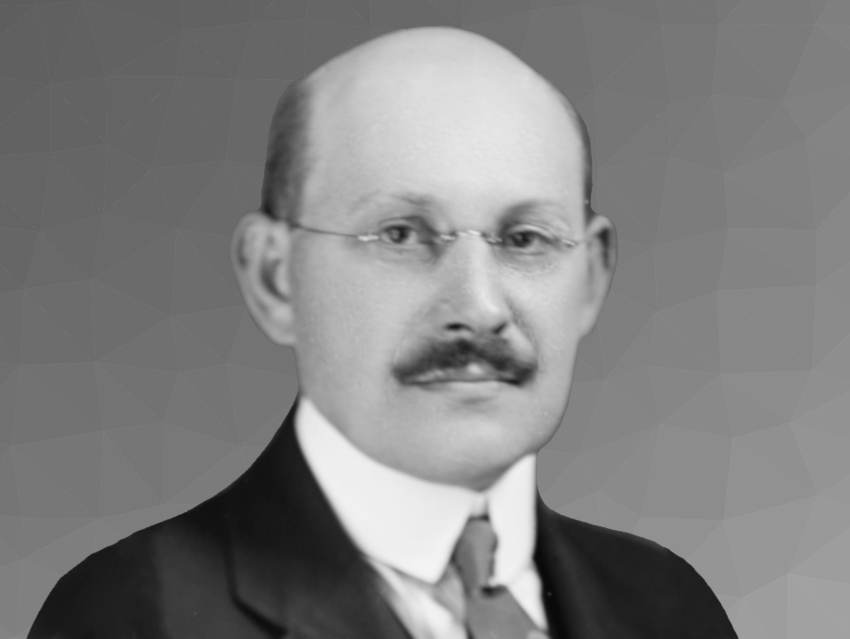Lafayette Benedict Mendel was born on February 5, 1872, in Delhi, NY, USA, to German immigrants. He studied classics, economics, humanities, biology, and chemistry at Yale University, New Haven, CT, USA, and received his Bachelor’s degree in 1891. He performed postgraduate research at Sheffield Scientific School, a part of Yale University, working on physiological chemistry. Mendel completed his Ph.D. there in 1893 under the supervision of Russell Henry Chittenden and remained at Sheffield School as a Research Assistant.
After spending some time in Germany in 1895 and 1896 at the Universities of Breslau (in today’s Poland) and Freiburg, Mendel returned to Sheffield School and became Assistant Professor. He was promoted to Full Professor in 1903 and was named Sterling Professor of Physiological Chemistry in 1921. Mendel remained at Yale for the rest of his career. He became a Member of the U.S. National Academy of Sciences in 1913 and won the American Institute of Chemists Gold Medal in 1927. Lafayette B. Mendel died on December 9, 1935.
Mendel worked on nutrition science—for many years in collaboration with Thomas B. Osborne. The two researchers showed that certain amino acids are essential for nutrition by studying the influence of different proteins on the development and health of rats [1,2]. The team also observed that young animals only fed with proteins, sugars, and starch were restricted in their growth, but that adding milk fat to their diet led to normal development. They concluded that milk fat must contain an essential nutrient, which led them to the discovery of the fat-soluble vitamin A in 1913. Vitamin A is a group of organic compounds, including retinol (pictured), retinal, retinoic acid, and several carotenoids such as β-carotene.

The discovery of vitamin A as an essential nutrient was made at almost the same time by Elmer McCollum and Marguerite Davis at the University of Wisconsin, Madison, USA, who also worked with rats. McCollum and Davis submitted their paper on vitamin A only 20 days before Mendel and Osborne. Both papers appeared in the same volume of the Journal of Biological Chemistry in 1913 [3,4].
Lafayette B. Mendel is the answer to Guess the Chemist (122).
References
- [1] The Role of Different Proteins in Nutrition and Growth,
T. B. Osborne, L. B. Mendel,
Science 1911, 34, 722–732
https://doi.org/10.1126/science.34.882.722 - [2] The Amino-Acid Minimum for Maintenance and Growth, as Exemplified by Further Experiments with Lysine and Tryptophane,
Thomas B. Osborne, Lafayette B. Mendel
J. Biol. Chem. 1916, 25, 1–12.
https://doi.org/10.1016/S0021-9258(18)87509-3 - [3] The necessity of certain lipins in the diet during growth,
E. V. McCollum, M. Davis,
J. Biol. Chem. 1913, 15, 167–175.
https://doi.org/10.1016/S0021-9258(18)88553-2 - [4] The relation of growth to the chemical constituents of the diet,
T. B. Osborne, L. B. Mendel,
J. Biol. Chem. 1913, 15, 311–326.
https://doi.org/10.1016/S0021-9258(18)88530-1
Sources
- Biographical Memoir of Lafayette Benedict Mendel: 1872–1935,
R. H. Chittenden,
National Academy of the Sciences, Biographical Memoirs, 1936. - Vitamine—vitamin. The early years of discovery,
L. Rosenfeld,
Clini. Chem. 1997, 43, 680–685.
https://doi.org/10.1093/clinchem/43.4.680
Also of Interest
- 50th Anniversary: Death of Elmer McCollum,
ChemistryViews 2017.
American biochemist discovered the first vitamins



